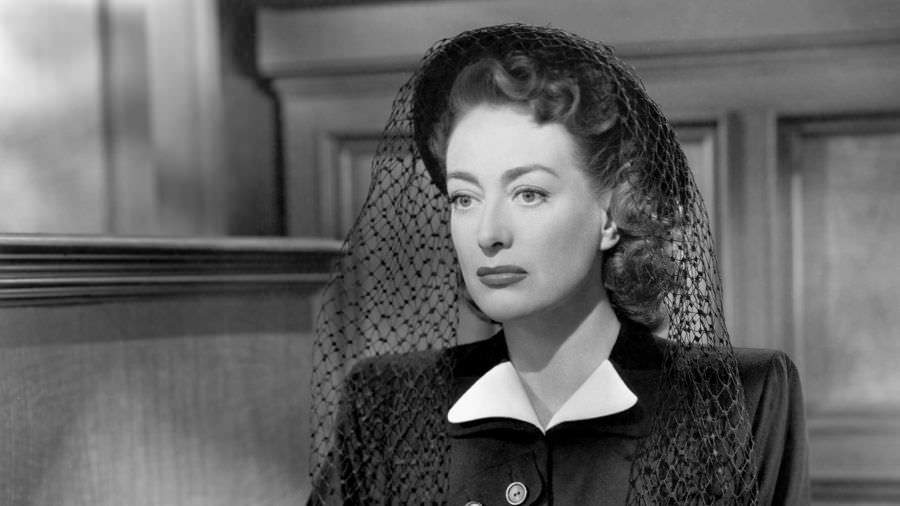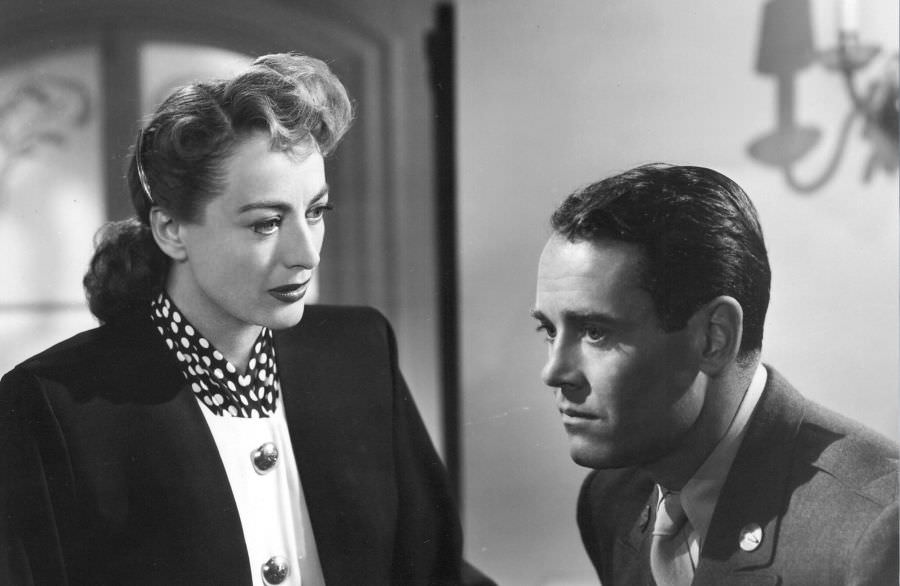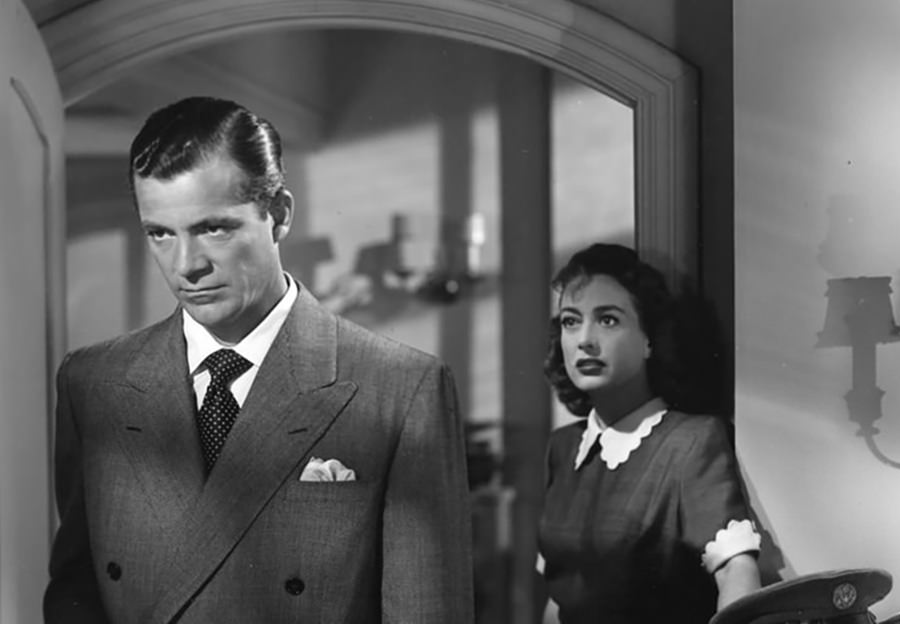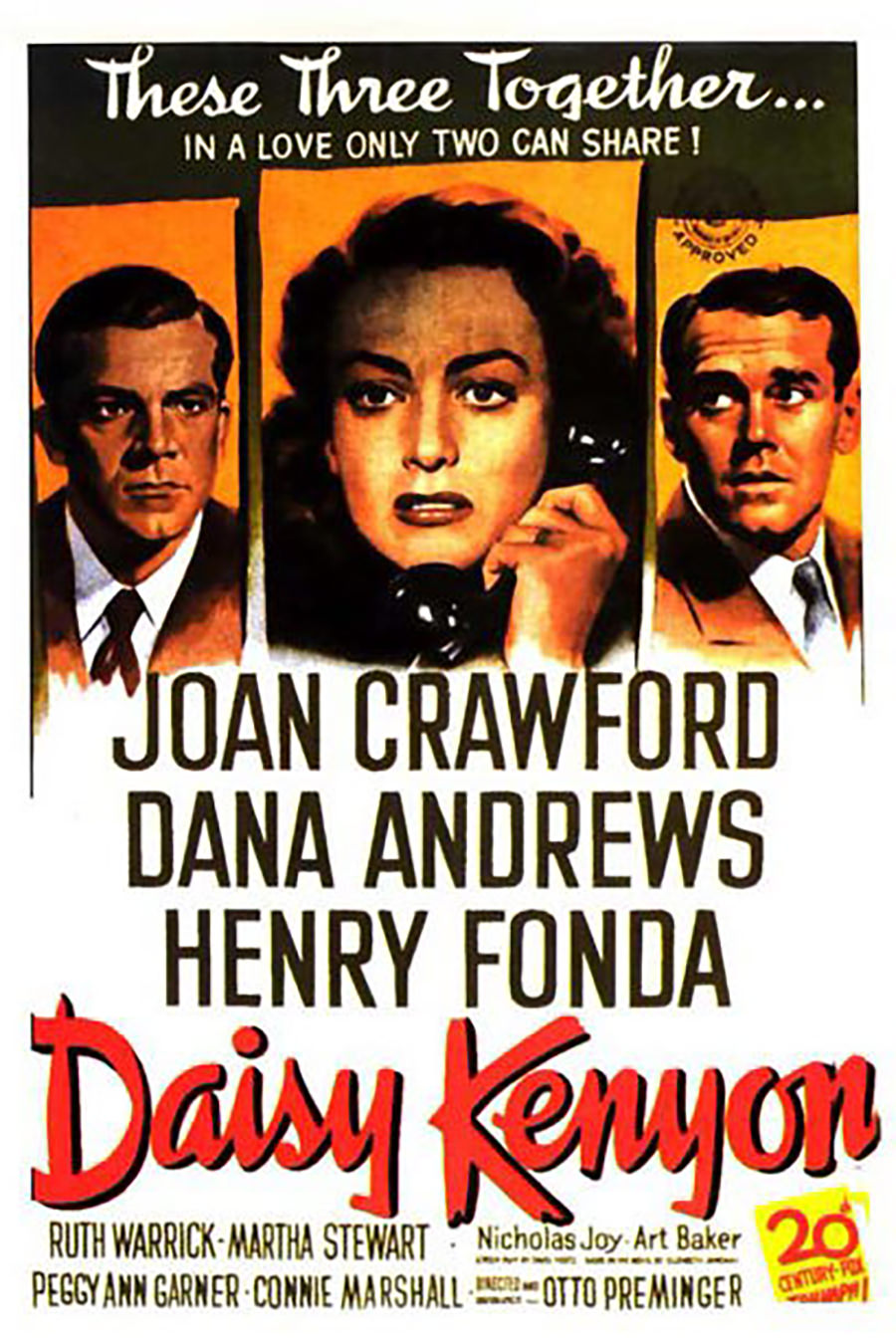Daisy Kenyon
Directed by Otto Preminger (1947) ***1/2
Daisy Kenyon, a post-WWII love triangle, successfully straddles two genres; it’s a so-called women’s picture with distinct noir overtones in its cinematography and its mood. As a drama, it has an adult sensibility not only advanced for its time, but advanced for our time;  I don’t see many — if any — films showing at my local theatre which feature such complex, nuanced, morally (and sexually) ambiguous characters. While director Otto Preminger doesn’t maintain the perfection of Daisy Kenyon‘s first half, it’s still a film much worth exploring.
I don’t see many — if any — films showing at my local theatre which feature such complex, nuanced, morally (and sexually) ambiguous characters. While director Otto Preminger doesn’t maintain the perfection of Daisy Kenyon‘s first half, it’s still a film much worth exploring.
Frequent and reliable Preminger collaborator Dana Andrews plays Dan O’Mara, a rich Manhattan lawyer with two young, sympathetic girls and a wife, Lucille (Ruth Warrick), who occasionally beats them. The frustrated, high-strung Lucille has reason to be stressed; Dan has been carrying on a relationship with magazine illustrator Daisy Kenyon (Joan Crawford), a woman in her ’40s getting fed up with Dan’s empty promises of leaving his wife. When we first meet Dan visiting Daisy’s studio apartment, she’s expecting a different date partner to show up: Peter Lapham (Henry Fonda), an amiable but psychologically damaged war veteran. David Hertz’s screenplay eschews the obvious romantic rival behavior seen in similar films. Dan and Peter’s conversations are wry, understated, friendly on the surface, with any jealousy and combativeness sublimated.
Preminger smartly doesn’t take sides in this awkward triangle and allows the audience to be in suspense about its culmination until the very last scene. Daisy is genuinely unsure of who to give her allegiance to. She seems to love Dan more, but his married situation is untenable. Crawford in this role is more low key than usual, giving a sensitive and convincing performance. 
 Dan could have been portrayed as a thoroughly unlikable character, but Andrews, even with his minimalist, understated style, can still make us root for him (he also takes on a controversial case defending a Japanese American infantryman returning from WWII who’s had his property stolen from him in his absence — the first American film to reference the internment camps.) Peter is so easygoing and frank that it’s hard for Daisy to resist him or for Dan to be furious at. Preminger’s directing style cuts only when necessary, the camera following character’s actions with occasional crane shots, few closeups, and beautiful deep focus shots. This technique allows and requires the viewer to understand how body language reveals relationships and how the background details reflect and inform the characters. It’s a style that uses and reinforces nuance.
Dan could have been portrayed as a thoroughly unlikable character, but Andrews, even with his minimalist, understated style, can still make us root for him (he also takes on a controversial case defending a Japanese American infantryman returning from WWII who’s had his property stolen from him in his absence — the first American film to reference the internment camps.) Peter is so easygoing and frank that it’s hard for Daisy to resist him or for Dan to be furious at. Preminger’s directing style cuts only when necessary, the camera following character’s actions with occasional crane shots, few closeups, and beautiful deep focus shots. This technique allows and requires the viewer to understand how body language reveals relationships and how the background details reflect and inform the characters. It’s a style that uses and reinforces nuance.
The writing powerfully draws the viewer in. As the camera follows Dan around in the opening scenes, it’s left to us to figure out who the people are in his life and how they’re related (his frequent habit of calling nearly everyone “honeybunch” or “baby” adds to the ambiguity). Leon Shamroy’s cinematography gives every interior shot a rich, lived-in sheen, while using stark lighting and weather to accentuate moods. Though shot on the 20th Century Fox lot, Daisy Kenyon tries its best to portray the Manhattan upper crust milieu. A scene set in the Stork Club includes cameo appearances by newspaper columnist Leonard Lyons and Walter Winchell, with actor John Garfield at the bar.
Preminger’s classic Laura, the hit that allowed him to have a long and substantial career at 20th Century Fox, is a perfect concoction;  it doesn’t strike any wrong notes. Daisy Kenyon, on the other hand, perhaps as conceits to the genre of women’s pictures, or as fealty to the bestselling novel by Elizabeth Janeway that the movie’s derived from, takes a few wrong turns. A courtroom scene is made into a far bigger spectacle than can be believable for the case being tried; a poetic monologue by Peter to Daisy seems both contrived and too schmaltzy by far; and, most fatally, a scene with Daisy haunted by a ringing telephone is so over-the-top melodramatic (made worse by David Raskin’s ever louder music score) it veers into what plays now as camp. If Preminger had been able (or been allowed) to maintain the subtle tone of the film’s first half, it would be an unqualified masterpiece. As is, it’s still superior filmmaking and a fine portrayal of issues post-WWII America grappled with.
it doesn’t strike any wrong notes. Daisy Kenyon, on the other hand, perhaps as conceits to the genre of women’s pictures, or as fealty to the bestselling novel by Elizabeth Janeway that the movie’s derived from, takes a few wrong turns. A courtroom scene is made into a far bigger spectacle than can be believable for the case being tried; a poetic monologue by Peter to Daisy seems both contrived and too schmaltzy by far; and, most fatally, a scene with Daisy haunted by a ringing telephone is so over-the-top melodramatic (made worse by David Raskin’s ever louder music score) it veers into what plays now as camp. If Preminger had been able (or been allowed) to maintain the subtle tone of the film’s first half, it would be an unqualified masterpiece. As is, it’s still superior filmmaking and a fine portrayal of issues post-WWII America grappled with.
The 20th Century Fox DVD has a wealth of resources, including the original trailers, audio commentary by Preminger biographer Foster Hirsch, a short documentary on Preminger’s tenure at Fox, a short documentary on the making of Daisy Kenyon, still galleries and more. Fox treated its noir catalog with class on DVD; how the library will fare now that Disney holds the rights remains a mystery. With Disney now holding the keys to the vault, however, the chance of further Preminger films made at 20th Century Fox being released to the public — or any older Fox films being released at all — is diminished.
—Michael R. Neno, 2021 November 2